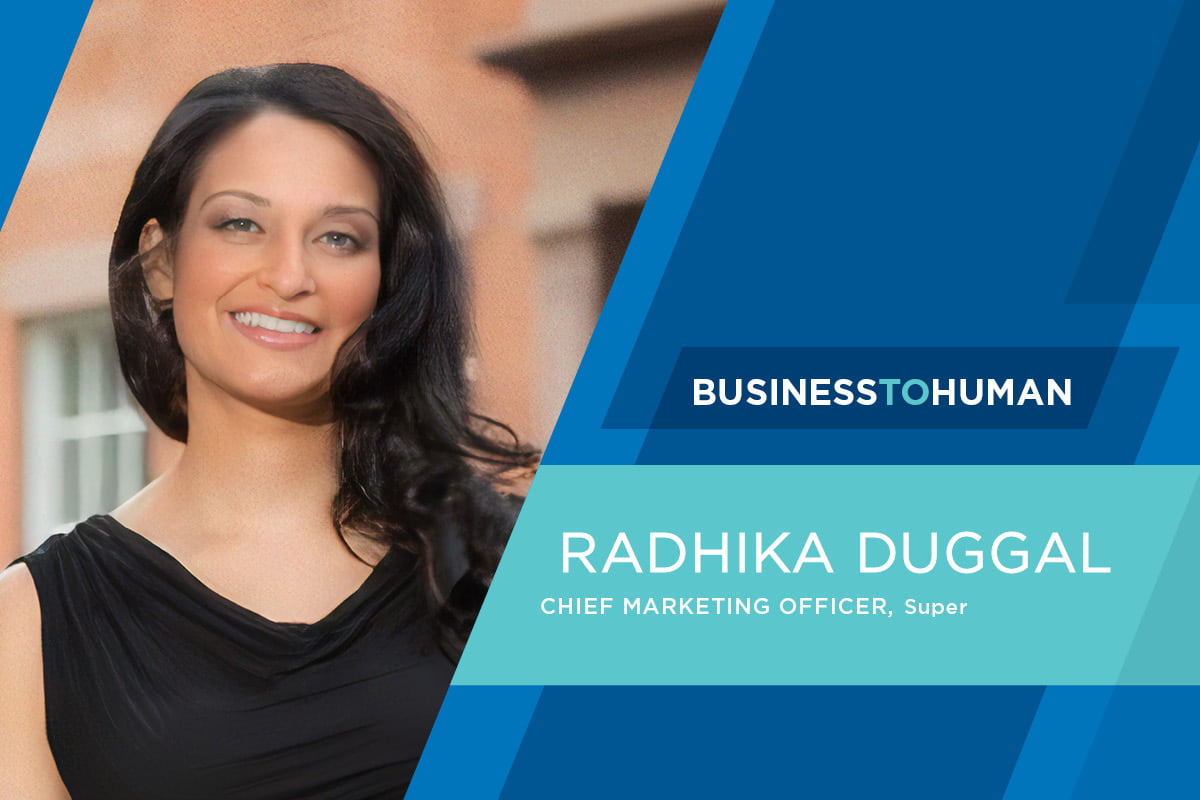Businesses sometimes lose sight of the human aspect of marketing; instead, seeing their customers only as data points with obvious limitations and drawbacks. Vericast’s guest for episode 8 of our Business to Human podcast series, Radhika Duggal, reminds us that the best marketers have a deep understanding of their customers, learn from them about their needs, and become their voice. She shares insights from her own experiences on how to become that voice of the customer, leading to more satisfying design, development, and marketing of products and services.
Radhika Duggal is the Chief Marketing Officer at Super, a technology company at the intersection of fintech and commerce that empowers users to spend less, save more and build credit. Radhika has over two decades of experience in brand and growth marketing across many industries. In Business to Human, she shares her thoughts on the importance of understanding your audience to drive success.
Three ways to overcome shrinking resources and customer disconnect
Super’s marketing challenge is common and spans all industries: diminishing resources and the expectation to do more with less.
Fortunately, according to Radhika, there are ways for marketers to overcome resource limitations. And each is rooted in understanding your customer.
1. Be scrappy, resourceful and BOLD
It is essential to really dig into your target audience in order to develop and release a product that has clear use and value for customers. And you don’t need a lot of resources like panel studies, focus groups, or other high-cost investments to achieve it.
Radhika’s market research method was to stand outside a competing lender and ask questions to customers as they exited the building. Her plan was bold, budget-friendly – and effective.
“You start to understand their pain and passion points,” Radhika said, “what works and what doesn’t.”
2. Raise your hand for projects that can improve your work
Hands-on project work provides insight for developing products that serve customer needs and wants but also has other benefits. Stepping outside your immediate responsibilities to take on projects will benefit the company and enhance your knowledge, performance and productivity.
“I raised my hand for a special project — a multi-segment market research project,” Radhika said. “In doing that, I was able to make sure that the project also did double duty serving my team’s needs for that product.”
3. Have a plan to demonstrate your value
Taking on extra responsibilities for new products and testing can also help demonstrate and preserve value. Instead of increasing headcount, offer your most passionate and dedicated team members the chance to contribute to products and services that truly serve your customers and build business. Chances are your top performers will jump at the opportunity.
In the end, regardless of industry, you’re trying to reach other human beings. Even with limited resources, you need to talk to the people you’re trying to reach to truly understand what’s on their minds. Maintaining these connections is essential for preserving humanity in marketing.
Think practically and apply what you know about your target audience
Once you identify and understand the needs of your target audience, apply that insight to serve your customers and business.
As a product-led organization, Super relies on knowing their customers so their teams recognize the value and purpose behind what they’re doing. Each data point informs forward action or justifies nonaction.
“We gather data about product usage and use it to inform feature development,” Radhika says. “It gives us the ability to iterate quickly and drive value.”
The importance of customer-centricity and collaboration impacts more than marketing effectiveness and product and personal development. Ensuring communication and alignment across all teams, including operations, supports company goals and success.
“We structure our policies or procedures around what we know our customer needs,” Radhika adds. “That way, every interaction, whether it’s on the phone or on social or in another setting, we’re making sure people are getting what they need.”
Adding connectivity to your marketing toolkit
According to Radhika, there is one essential element missing from today’s marketing toolkits — team connectivity.
“So many different disciplines fall into the one catch-all phrase ‘marketing,’” she says. “But in reality, marketing teams need to be connected and aligned in the purpose to drive business.”
Marketing campaigns must be successful in serving clients on a large scale, across all disciplines, to achieve long-term success. To foster healthy business growth, marketers in specialized fields and separate departments must follow a strategy and industry trend of connectivity – because it is truly revolutionizing marketing.
“We have to make sure the art and the science play an integrated and connected role,” Radhika says. “That’s how we’re going to maximize our success.”
Did you enjoy the content? Listen to the full Business to Human episode.
To hear this episode, and many more like it, you can subscribe to Business to Human Podcast on our website, Apple Podcasts, Spotify, or just search for Business to Human Podcast in your favorite podcast player.
